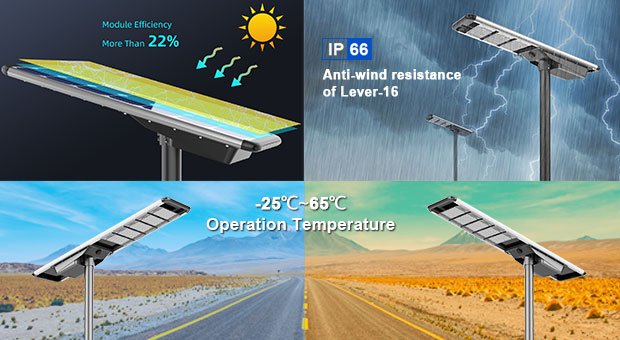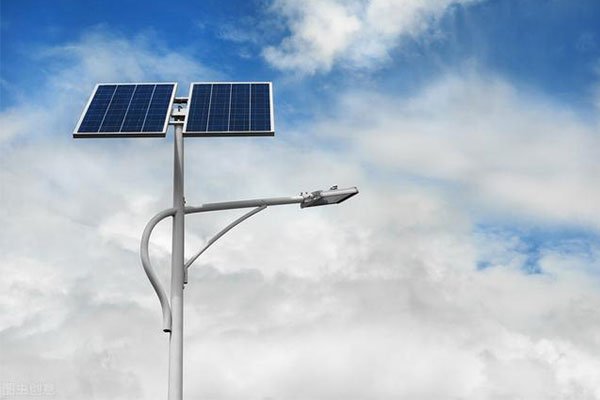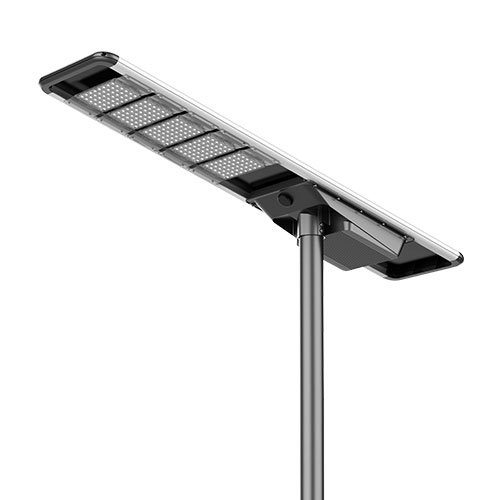[Solar street lights](Investing in professional maintenance increases system reliability and efficiency. "Solar street lights") offer an energy-efficient and sustainable lighting solution, but regular maintenance is crucial to ensure long-term reliability. How can cities and businesses keep their systems running optimally throughout the year?
A seasonal maintenance plan ensures solar street lights operate efficiently, providing consistent illumination and safety. Regular inspections, cleaning, and battery checks help prevent failures, extend lifespan, and maximize energy savings.
By following a structured maintenance routine, municipalities and businesses can reduce repair costs, improve performance, and increase the durability of their solar lighting systems.
Introduction: Importance of Solar Street Light Maintenance
Solar street lights are exposed to changing weather conditions, making maintenance a key factor in their performance and longevity.
- Ensures maximum efficiency – Clean solar panels absorb more sunlight.
- Extends lifespan – Regular battery and wiring checks prevent early failures.
- Enhances safety – A well-maintained system ensures reliable nighttime illumination.
A seasonal maintenance strategy allows solar street lights to function effectively year-round, adapting to different environmental challenges.
Spring Maintenance: Preparing for Longer Days
With winter over, spring is the perfect time to inspect and clean solar street lights for optimal performance in the coming months.

Cleaning and Inspection
Dust, pollen, and debris can accumulate on solar panels, reducing efficiency.
- Clean solar panels with a soft cloth and mild soap solution.
- Inspect light fixtures, poles, and wiring for damage.
- Check for signs of rust, corrosion, or loose components.
A thorough inspection at the start of spring helps detect potential issues early, preventing costly repairs later.
Battery Check
Batteries play a crucial role in storing solar energy, and winter conditions can affect their performance.
- Inspect battery compartments for corrosion or leaks.
- Test battery performance and replace if necessary.
- Clean battery terminals and secure compartments against moisture.
A well-functioning battery ensures consistent nighttime lighting as daylight hours increase.
Summer Maintenance: Preventing Overheating
Hot temperatures can cause overheating and reduce the efficiency of solar panels, batteries, and electrical components.
Checking for Heat Damage
Excessive heat can degrade components over time.
- Look for signs of discoloration, cracks, or warping in solar panels.
- Inspect fixtures and batteries for overheating issues.
- Ensure wiring insulation is intact to prevent electrical faults.
Performance Monitoring
[With longer daylight hours](Investing in professional maintenance increases system reliability and efficiency. "With longer daylight hours"), summer is an ideal time to assess system efficiency.
- Monitor light output and adjust settings if needed.
- Ensure panels are receiving maximum sunlight exposure.
- Identify and address any fluctuations in brightness or power storage.
Regular checks during the hottest months prevent system degradation and extend component life.
Fall Maintenance: Adapting to Changing Sunlight Angles
As days shorten, adjusting solar panels and preparing for colder temperatures is essential.

Cleaning and Adjustments
Leaves, dust, and debris can accumulate on solar panels, reducing their efficiency.
- Remove fallen leaves, twigs, and dust from solar panels.
- Adjust panel angles to maximize sunlight absorption.
- Check for early signs of ice or moisture buildup.
Battery and Wiring Check
Cold temperatures affect battery performance, making fall the best time for pre-winter battery maintenance.
- Test battery charge cycles before winter sets in.
- Inspect wiring for any damage from summer heat.
- Ensure all electrical connections are secure and waterproofed.
Proper preparation in fall prevents malfunctions during winter months.
Winter Maintenance: Maximizing Efficiency in Cold Weather
Winter presents unique challenges, such as snow accumulation and reduced sunlight exposure.

Snow and Ice Removal
Heavy snow and ice can block solar panels, reducing power generation.
- Clear snow and ice from panels using a soft brush to prevent scratches.
- Check for cracks or damage caused by freezing temperatures.
- Ensure lights remain operational during shorter daylight hours.
Battery and Wiring Protection
Low temperatures reduce battery efficiency, leading to shorter lighting durations.
- Ensure battery compartments are sealed against moisture.
- Regularly test battery performance in freezing temperatures.
- Inspect wiring for any cracks or breakage due to extreme cold.
Winter maintenance helps ensure reliable lighting despite the harsh conditions.
General Maintenance Tips for Longevity
In addition to seasonal checks, ongoing maintenance improves system performance and lifespan.
Regular Inspections
Routine inspections help identify potential issues before they become major problems.
- Conduct inspections every three months.
- Maintain records of maintenance activities.
- Analyze patterns to improve future maintenance schedules.
Professional Maintenance
For large-scale solar street lighting projects, professional servicing ensures in-depth system checks.
- Schedule annual servicing with trained technicians.
- Upgrade components based on manufacturer recommendations.
- Consider smart solar lighting with cameras for added security and monitoring.
Investing in professional maintenance increases system reliability and efficiency.
Safety Considerations for Maintenance Teams

Solar street light maintenance involves working with electrical systems and heights, making safety a top priority.
- Wear protective gear such as gloves, goggles, and helmets.
- Follow proper ladder and harness procedures when working on poles.
- Ensure technicians receive regular safety training and certification.
Implementing strict safety protocols prevents accidents and ensures maintenance tasks are completed efficiently.
Conclusion: Maintaining Reliable Solar Street Lighting
Seasonal maintenance is essential for maximizing efficiency, extending lifespan, and ensuring consistent illumination.
By implementing a structured maintenance plan, cities and businesses can prevent costly repairs, improve energy savings, and enhance public safety.
Regular care and timely upgrades guarantee that solar street lights continue to provide reliable, sustainable lighting for years to come.







